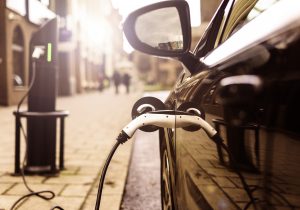
Business loves blockchain. Though very few know exactly what this term means, but when a company listed on a stock exchange informs that it is going to use blockchain, its share value is very likely to grow. no wonder blockchain has fallen into the scope of interest of a broadly understood energy sector.
Blockchain is a sort of a distributed database which, as the name suggests, consists of a chain of blocks. The general principle is that the contents of a block, once added to the chain, cannot be modified. The database continuously generates new blocks containing some data and distributed computers of users verify the contents of the block looking for the unique key that described the contents. This is called mining and is awarded with cryptocurrencies, for instance the famous bitcoin.
A characteristic feature of blockchain is the possibility for the database users to make transactions between each other (peer-to-peer) with no middle parties. All such transactions are later enclosed in a block that constitutes evidence of the concluded transaction. At the same time, a blockchain is a public and open ledger accessible by each user[1].
Blockchain is a revolutionary technology as it needs no centralised transaction platform (a stock exchange market, bank, trading platform). It is the very technology, not a supervising entity that guarantees the reliability of the process.
Decentralised energy sector versus blockchain
For years the people in the energy sector have discussed anticipations that the future energy system will become more and more decentralised. Instead of big power plants it will consist of more and more distributed, small sources of various types, including home photovoltaic installations. Blockchain’s decentralised conclusion of transactions seems a natural supplement to the generation distribution. To put it simply, an owner of even the smallest power source will be able to sell, at any time and on agreed terms, power to anyone in a peer-to-peer transaction, and the buyer will be able to buy what they find the most cost-efficient from anyone they want. This is just theory as the freedom of production and trade will need to be limited by physical parameters of the electric power system. Nevertheless, the prospect is an interesting one and the first steps have already been taken.
Prospects
In the USA we already see local initiative going. For instance, Clean Energy Blockchain Network operating at Northwestern University synergises the current power generated by photovoltaic panels with the current demand of electric car chargers. Other initiatives involve matching and trading energy between local producers and consumers.
- According to a report by PwC consulting firm, from the perspective of power suppliers, the primary benefits of blockchain include greater transparency of the energy transaction chain, from generation to consumption and lower costs of operation and control;
- thanks to publicly available, unforgeable data.
Constraints
The primary constraints involve performance of the technology. Blockchain requires huge computing powers and the number of transactions that may be concluded at a given moment is relatively small. Especially in comparison with electronic trading platforms where hundreds and thousands more transactions are performed.
Another constraint is that of the regulatory nature. Various states have different approaches to cryptocurrencies, ranging from acceptance through intentions to tax cryptocurrency deals. The energy sector is a strategic area and hardly any state will give up control over certain processes. However, blockchain and cryptocurrencies by assumption remain beyond centralised control and supervision. Thus, it is a genuine challenge to develop regulations which, on one hand, will allow states to set the rules of the game, and on the other – will not kill potential benefits for all power producers and consumers.
[1] https://en.wikipedia.org/wiki/Blockchain




